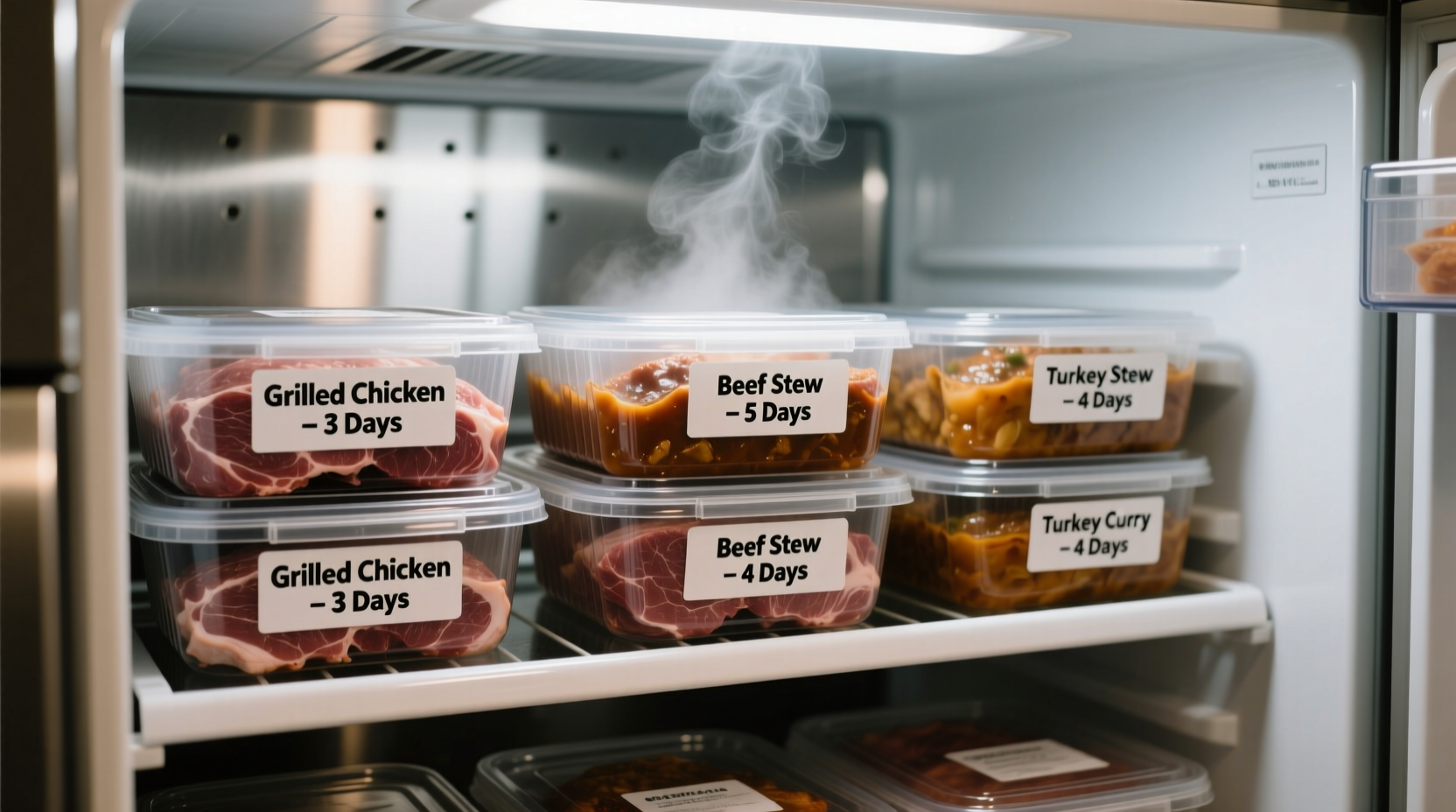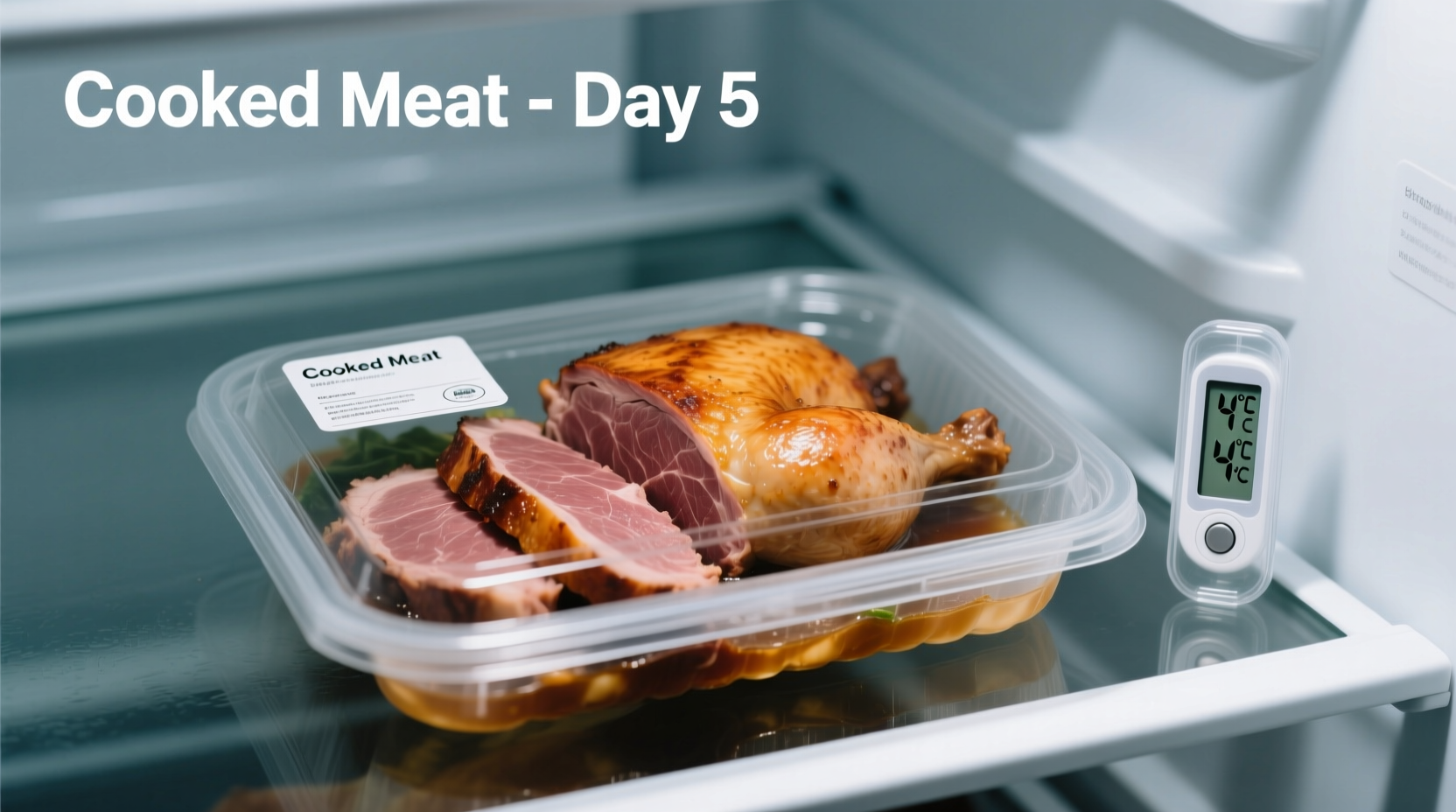Ever opened your fridge and wondered if those leftovers are still safe to eat? You're not alone. Proper food storage is crucial for both safety and reducing waste. Getting this wrong could mean the difference between a delicious second meal and a miserable case of food poisoning.
Why Food Safety Matters More Than You Think
According to the USDA Food Safety and Inspection Service, foodborne illnesses affect 1 in 6 Americans annually. Cooked meat, while initially safe, becomes a breeding ground for bacteria if stored improperly. The FDA Food Code clearly states that potentially hazardous foods like cooked meats must be kept out of the temperature danger zone (40°F-140°F) to prevent rapid bacterial growth.
How Long Different Cooked Meats Last: The Complete Guide
| Meat Type | Refrigerator Storage Time | Special Considerations |
|---|---|---|
| Cooked poultry (chicken, turkey) | 3-4 days | Remove from bones for longer storage |
| Cooked beef, pork, veal, lamb | 3-4 days | Soups/stews with vegetables: 3-4 days |
| Cooked fish and shellfish | 3-4 days | Fatty fish spoils faster than lean varieties |
| Meat casseroles | 3-4 days | Those with egg/cheese: 2-3 days |
| Cooked meat patties | 1-2 days | Higher surface area increases spoilage risk |
The Science Behind Food Spoilage in Your Fridge
Refrigeration slows but doesn't stop bacterial growth. The Centers for Disease Control and Prevention explains that pathogenic bacteria like Salmonella and Listeria can double in number every 20 minutes in the temperature danger zone. Even in a properly functioning refrigerator, spoilage bacteria continue multiplying, just at a slower rate.
Several factors affect how quickly cooked meat spoils:
- Initial cooking temperature - Meat cooked to proper internal temperatures has fewer surviving bacteria
- Cooling speed - Rapid cooling prevents bacteria from entering exponential growth phase
- Storage container - Airtight containers prevent cross-contamination and moisture loss
- Refrigerator temperature - Consistent 40°F or below is critical

Step-by-Step Guide to Maximizing Leftover Safety
Cooling Cooked Meat Properly
The two-hour rule is critical: refrigerate cooked meat within two hours of cooking (one hour if room temperature exceeds 90°F). Divide large portions into shallow containers no deeper than 2 inches to facilitate rapid cooling. Never place hot food directly in the refrigerator as it raises the internal temperature of your appliance.
Storage Best Practices
Use airtight containers or heavy-duty aluminum foil to prevent moisture loss and odor absorption. Glass containers maintain temperature better than plastic. Always label containers with contents and date using waterproof markers. Store cooked meats on upper shelves (not in the door) where temperatures are most consistent.
Reheating Leftovers Safely
Reheat leftovers to an internal temperature of 165°F as measured by a food thermometer. Add moisture when reheating to prevent drying out. Soups and sauces should be brought to a rolling boil. When in doubt about safety, follow the USDA's "when in doubt, throw it out" principle.
How to Identify Spoiled Cooked Meat: Beyond the Clock
While timeframes provide guidance, sensory evaluation is equally important. Discard cooked meat showing any of these signs:
- Visual changes - Gray or greenish hues, mold growth (even in small spots)
- Odor changes - Sour, rotten, or "off" smells (fresh cooked meat has little odor)
- Texture changes - Slimy or sticky surface, excessive liquid
- Taste changes - Sour or bitter flavors (only test if other signs are absent)
Remember that harmful bacteria don't always produce noticeable changes. If meat has been stored longer than recommended timeframes, discard it regardless of appearance.
Special Considerations for High-Risk Groups
For pregnant women, older adults, young children, and immunocompromised individuals, the Food Safety and Inspection Service recommends reducing storage time to 2-3 days. These groups face higher risks of severe complications from foodborne illnesses. When serving high-risk individuals, consider freezing leftovers immediately if not consuming within 24 hours.
When Freezing Is Your Best Option
If you won't consume leftovers within 3-4 days, freezing extends safety significantly. Cooked meat maintains best quality for 2-6 months in the freezer. Use freezer-safe containers with minimal air space. Thaw frozen leftovers in the refrigerator, not at room temperature, allowing 24 hours for every 5 pounds of meat.











 浙公网安备
33010002000092号
浙公网安备
33010002000092号 浙B2-20120091-4
浙B2-20120091-4